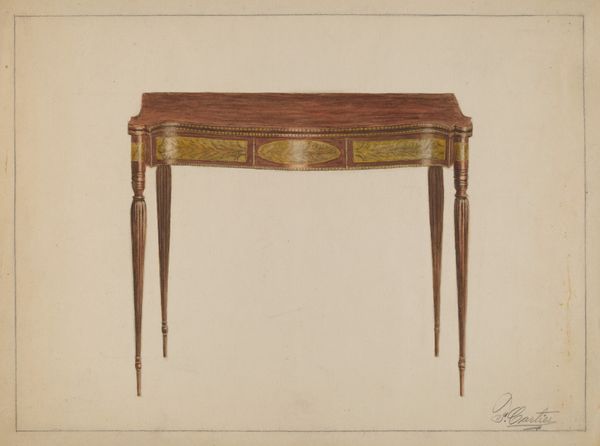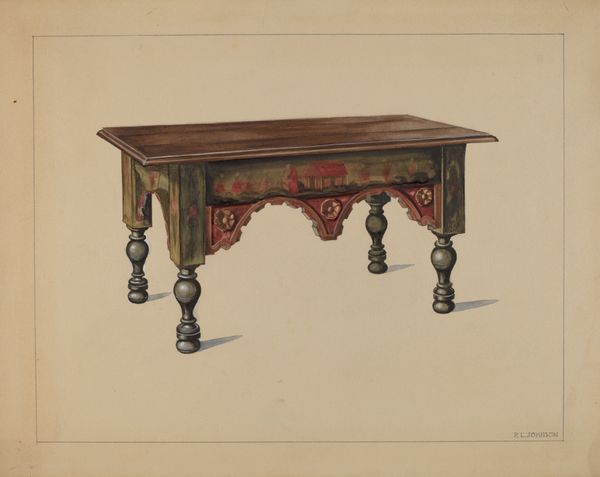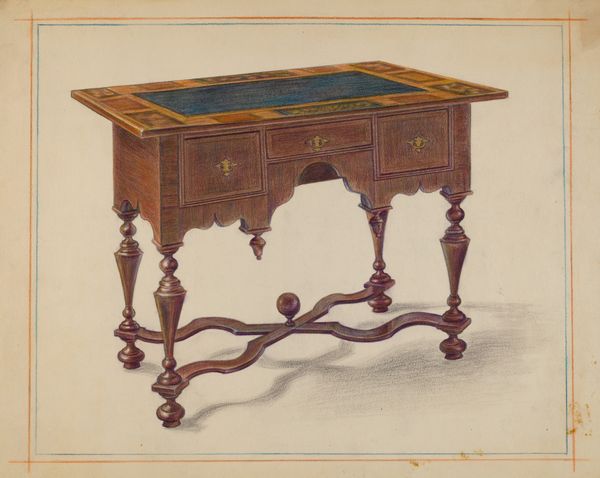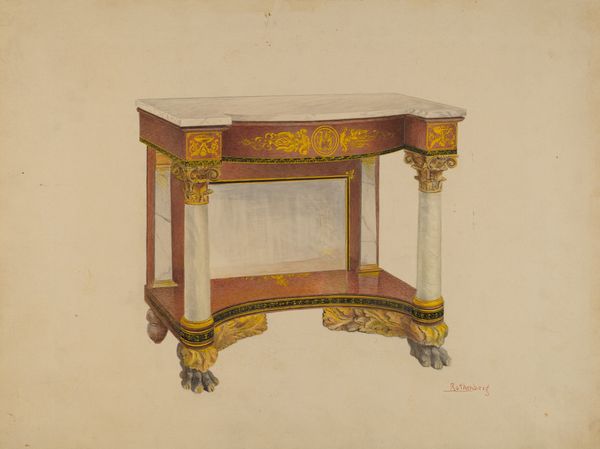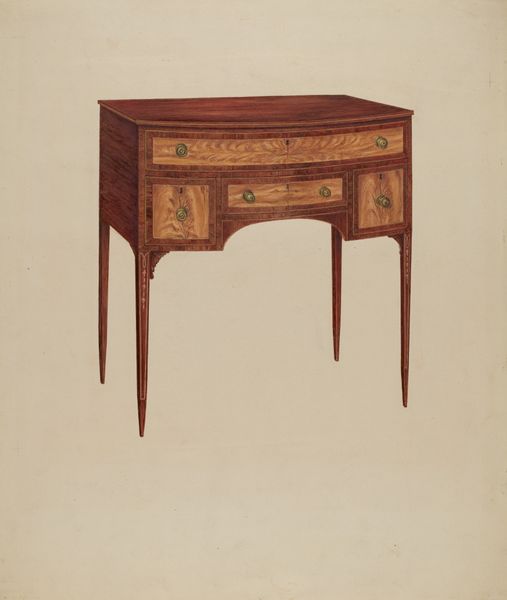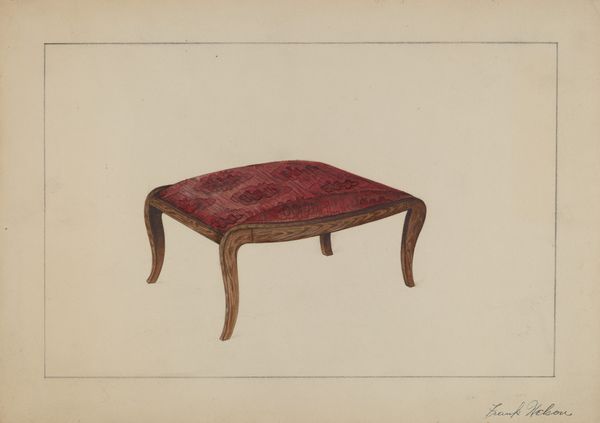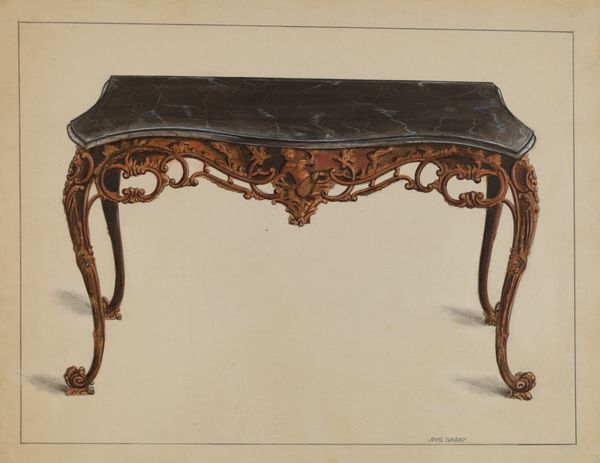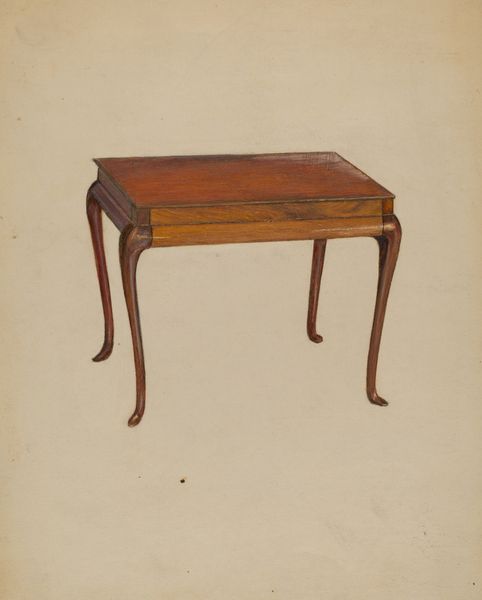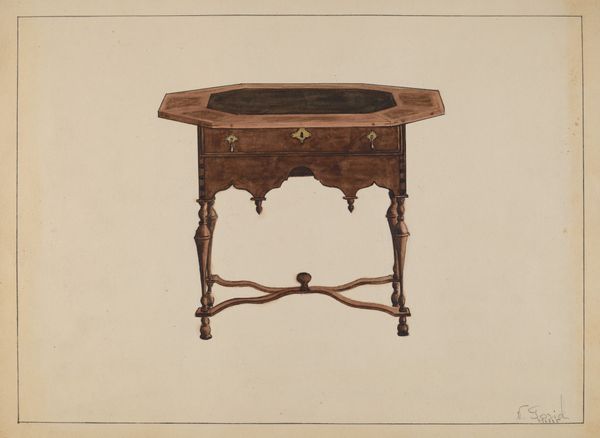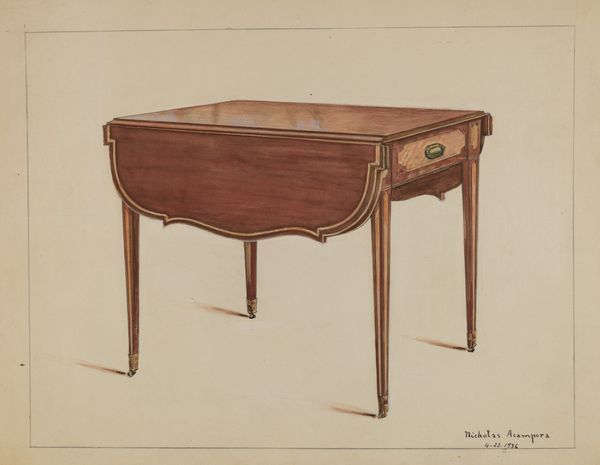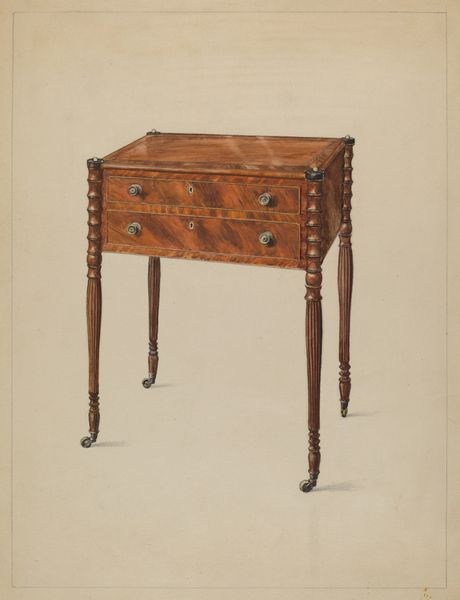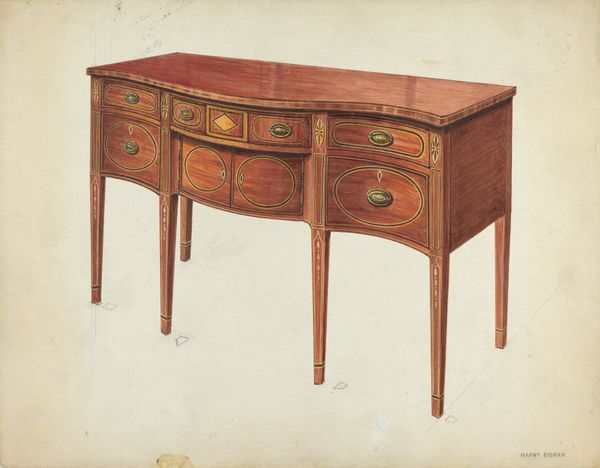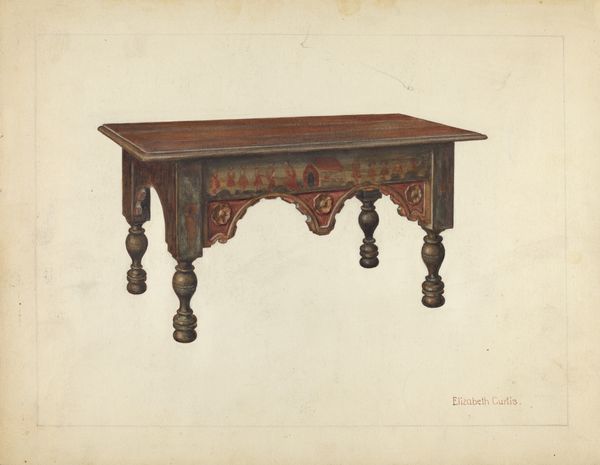
drawing, watercolor
#
drawing
#
water colours
#
watercolor
#
academic-art
#
watercolor
Dimensions: overall: 23.2 x 29.8 cm (9 1/8 x 11 3/4 in.) Original IAD Object: 28"high; 47 1/2"long; 24"wide
Copyright: National Gallery of Art: CC0 1.0
Editor: Here we have "Pier Table," a watercolor drawing from around 1936, signed "S. Paslin". The detail is amazing. The artist really captured the sheen of the marble and the rich tones of the wood. How would you approach analyzing the formal elements here? Curator: The immediate emphasis should be placed on the rendering of volume. Note how the artist uses light and shadow to give the table's legs their bulbous shape, especially the claw-and-ball feet. What do you make of the line work? Editor: I notice that the lines are really crisp and precise, especially in the ornamentation along the apron of the table. It’s quite different from the more fluid wash of the marble top. It's almost like the artist is using different kinds of lines to distinguish different textures. Curator: Precisely. And it's in this contrasting application of line and wash, of structured ornamentation against amorphous form, that a central tension exists. Observe how the implied light source impacts our reading of form. Does the evenness of the lighting flatten the marble or enhance its depth? Editor: I think the even light emphasizes the flatness of the marble surface, contrasting with the more sculptural qualities of the table legs. The controlled palette really underscores this effect as well. It is subtle. Curator: Agreed. Consider, too, the implied geometry. The rigid, almost severe lines of the tabletop versus the curvilinear flourishes in the legs. The piece becomes a study in contrasts, a conversation between the geometric and the organic. Does this shift your reading? Editor: Definitely! I was so focused on the craftsmanship, but now I see it’s more than just a depiction of a table. It's about contrasting forms. It has shifted my focus towards understanding form over function. Thanks so much for illuminating how effective formalism can be! Curator: My pleasure. Focusing on internal structures is crucial to an aesthetic appreciation and thorough engagement with art. I am glad I could nudge your perceptions of Paslin's intriguing approach.
Comments
No comments
Be the first to comment and join the conversation on the ultimate creative platform.
